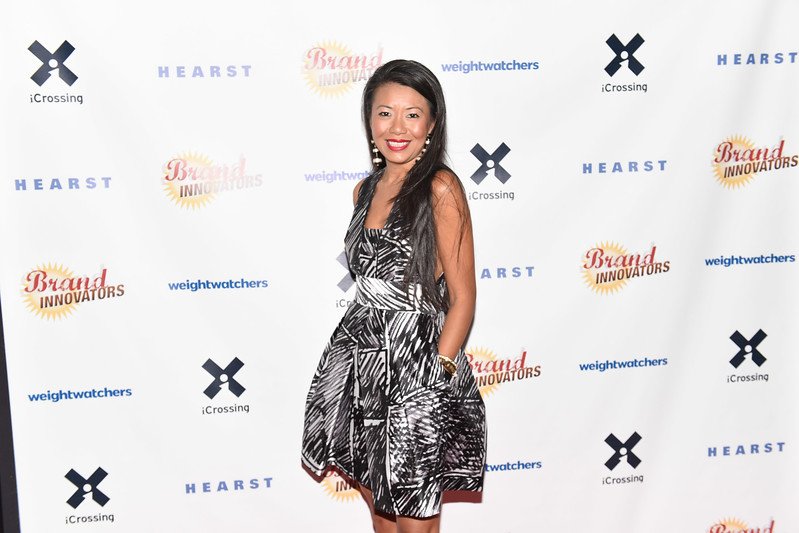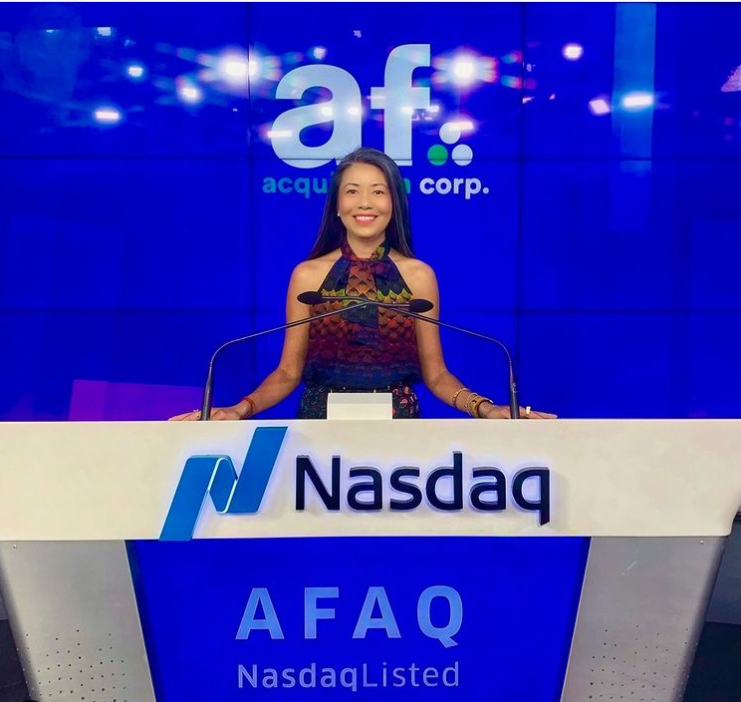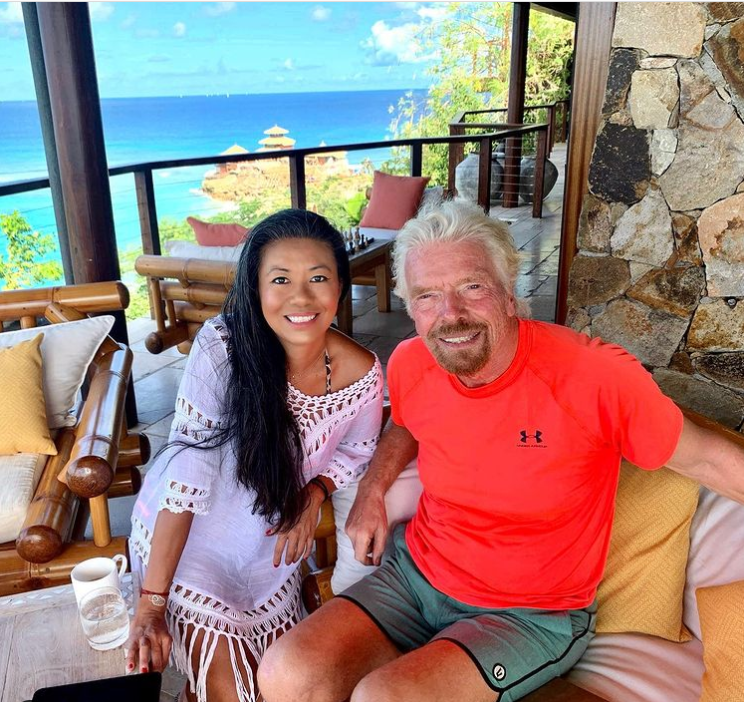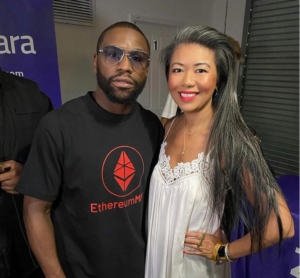Raj Girn: This week’s theme is branding and marketing, and I’ll be tackling the world of digital marketing today for all of you who have been reaching out to me to help you navigate this behemoth. My guest today is a woman I truly respect and admire for her work in the digital marketing space. Her name is Swan Sit and she is one of Brand Innovators’ 40 under 40 and marketing women to watch.
Swan is the former global head of digital marketing for Nike, Revlon and Estée Lauder, which is no wonder that she has a staggering three million-plus followers on Clubhouse, where she shares her insights daily and is one of the top 30 most followed thought leaders on the social chat platform. She serves as an independent board director for two publicly traded companies and is an operating partner at AF Ventures and the newly launched Special Purpose Acquisition Company.
Here is Part One of our conversation:

Please welcome to the show the fabulous Swan Sit.
Swan Sit: Raj, I’m so happy to be here and I apologize that my bio is so long. I think it’s because I still don’t know what I want to be when I grow up. But for now, I’m happy to be here. I’m coming to you from the lovely Hudson’s Bay Resort in Antigua, and I want to show people that you can play hard and work hard too. So taking a little break from full time to be with you.

Oh my God, it’s such a pleasure, Swan, It’s so interesting because as a marketing thought leader and guru that you are you have such a marketing name, Swan Sit could be on all kinds of brands. And I don’t know if you’ve thought about that as another thing that you want to do when you grow up. But it’s just a very sexy name.
It’s so funny you say that because I hated the name when I was little. I mean, I came to the U.S. when I was six years old. I had a terrible haircut and big purple glasses and I didn’t have a lot of friends. I was different. I didn’t sound or look like anyone else. So the name Swan just added to that curiosity. And to this day, my cousin still calls me pigeon. And if you remember, the swan was the ugly duckling. So I had all those things stacked against me. And it didn’t help that I ran around talking about space and science. But now I wouldn’t trade it for the world. I mean, so much of who we are as adults is defined by our formative childhood experiences and the empathy and resilience I got from being teased (not great at that time) but as an adult, I mean, what an amazing perspective on the world. So I wouldn’t trade that. I didn’t even think of it as a brand. So something good to take away. You’ve already helped me today.
“So much of who we are as adults is defined by our formative childhood experiences.” ~Swan Sit
Absolutely Swan. I’ve been looking forward to deep diving this particular topic with you because your entire career has been built on understanding, executing and extending the footprint of companies in the digital marketing space. Your professional profile is what the American dream is made of, where you’ve reached the pinnacle of success as a marketing thought leader and garnered many accolades for your innovative campaigns. But like most stories, things start from somewhere. This is my first question. I would love to know why you decided to forge a career in marketing. Was it something that was on purpose or did you kind of just fall into it serendipitously? And I guess the other part of that question is what motivates you to stay in the space?
Well, I was a child of immigrant tiger parents, so they wanted us to be doctors and lawyers. I was in school 12 months out of the year and A- is considered an Asian F, and when I got 100, I was asked why I didn’t get 110. So that’s no different to most people’s immigrant stories. But it turns out I really loved science. I was really into astrophysics and I wanted to be a neurosurgeon when I was applying to college because I have pretty good, fine motor skills with my hands and I like to fix things and the hardest thing to fix is the brain. So I did a year of that and pre-med and I was like, wow, this is really hard. And I don’t know if we’re doing innovation or experimentation or surgery. We’re just doing lab.
And so I decided I wanted to pivot. I pivoted it into business, into economics, because I went to Harvard and it’s a liberal arts school, so there’s not specific trade skills you can learn. It’s liberal arts. And I thought, well, the business of technology or medicine could be kind of cool. And I graduated in 2000. And right then it was the dotcom boom, if you remember, crazy companies, giving amazing jobs. And I thought, well, this is an amazing chance to be a part of something big. But I’m not technical. I didn’t switch from bio-chem pre-med to CS, I switched to economics. So the only way to participate in the dotcom economy was to do marketing at that time. So now, of course, there’s so many different avenues. But for me to be able to participate, I said let me pick a lane, figure out where it takes me, and build the skills as I go.
So I wish I could say from the age of six, I knew I wanted to be a marketer. But when I was six years old and we immigrated to this country, I had never seen a barcode scanner at a grocery store. So again, remember my science brain, when you scan the barcode, it beeps and the price of the item comes up. That was mind blowing. When I was six, I told my parents I wanted to be a grocery checkout girl. Now, again, the Asian tiger parents were so disappointed. But then that evolved into maybe being a neurosurgeon, then it evolved into marketing for tech. What this all means is I don’t know if I knew I wanted to do marketing way back then. What I did know, though, is that I like understanding people and I like solving problems and creating solutions and marketing is a great way to do that.

So let me give you an example. The company I ended up going to right during the dotcom boom is called Trilogy, and it was the darling of the dotcom boom. They had Google kitchens before Google had them. They paid six figure salaries to kids coming right out of college in 2000 in Austin, Texas. And they just gave us blank checks and told us how to build. So we built a product called Leadership.com. We’d been working with Nolt Tishie, who is Jack Welch’s leadership adviser at G.E., and helped them build Crotonville. And I was obsessed with the idea of productizing leadership. So we came up with all these modules that we could try to take Jack Welch’s leadership principles and apply them for other executives. So we built something internal to a company similar to what LinkedIn is.
So we’d say, okay, well, I want to know about podcasts. I don’t know anything about it. But in the system, it says Raj knows about podcasts. So I don’t know Raj, but I know Sheila who knows Raj she let me ask for a connection. In a company the size of Ford, it’s such a useful tool. So we built LinkedIn before LinkedIn even existed. We built a video broadcast platform so people who are working remote in tech or working from home and this is back in 2000 when we were doing that. The CEO could broadcast daily messages. In 2000 we didn’t have YouTube and all these tools yet. So in a way, while we were thinking about building a solution, we actually have to build the technology.
And so stepping back, marketing, we always think about the downstream effects of having an ad that you see. If you go upstream, marketing is about creating products for a product market fit. You’re filling a need that someone has, whether they know it yet or not. You’re filling a need and solving a problem. So if you actually go all the way back to that marketing, that’s about solving problems. And the output of that is the content and the ad that we see. And that’s what’s really kept me going in all of this, because I like understanding people. I like solving problems. And Trilogy gave me a chance to do that as a marketer.
“Marketing is about creating products for a product market fit. You’re filling a need that someone has, whether they know it yet or not. You’re filling a need and solving a problem.” ~Swan Sit
And you had quite the journey along since then to now. And I want to kind of touch upon some of that as we go along. And I feel, because you are the preeminent storyteller, that you’re going to help me along that journey. So an obvious question for you, but one I’d love to ask, because each time that I do, I always go on to something new from each person’s lived experience. So I’m going to ask you a very elementary question, but somehow I feel that you’ll have the kind of answer that everybody needs to hear. What is marketing? Why is it important in today’s world?
It’s my favorite question, and it’s not elementary at all, because people often mistake what it is. People think it’s the ad we see or the motto or the icon or the mascot for our brand. But marketing is two parts. It’s first, the product market fit and then second, content and distribution. First, you actually have to figure out what is the need we’re trying to solve for and you create a product that serves a consumer’s need. Now, in CPG companies, that tends to be the product manager, the GM of the business. But actually, as you go into different sectors like technology, the product person does that and the marketer actually does the second part, which is the content versus distribution. So this is actually something that’s actually pretty important as people think about careers in this industry because different industries define marketing differently.
So the first part then, knowing that you’re creating the product, market fit and tech as a product manager and marketing, it’s the marketing manager. Once you understand that, then you need to figure out we’ve got this great product, how do we get it known to our consumers? And that’s where content meets distribution. That’s where you start creating the storylines, that targeted messaging, and then getting it to the right person. That’s universal across all industries. So, Raj, it’s a great question because most people forget about the first part, which is product market fit, and then they come with preconceived biases of what their industry defines it as. So we’re speaking the same language, but with completely different analogies and understandings.
So an example of how this comes to life is . . . I was in grad school at Columbia and my favourite class was the design and marketing of luxury goods, because half of a team is Parsons School of Design and half of a team is Columbia Business School students. So you can already see how the Lego pieces don’t really mesh together too well because it’s completely different mindsets. Passions and skill sets are awesome and they wanted to modernize the brand without going cheaper or downscale, modernizing to a lot of brands. And it’s reaching a younger audience, which is legitimate, but it doesn’t mean getting cheaper.

So the challenge they gave us was how do we become more relevant to new consumers and younger consumers without necessarily taking price down? So it’s about understanding people. And the first thing I did was I squatted at a store for three hours watching consumers shop. Every new client, every new brand I work for, I go in the store and I watch how consumers shop. One of the most interesting things is you get your roster of clientele. That’s pretty typical. Their high end luxury consumer, service is amazing, you get served a drink, they know who you are. That’s all expected. But when you watch consumers shop, you’ll realize that they’re actually loyal to specific categories more than others. One of the things I observed is so many consumers came in and wanted the iconic bracelet or the belt, sometimes a handbag, but that’s an upgrade.
People usually enter through bracelets or belts, but their eyes would always stop at the beautiful China. And there’s a beautiful pattern called Balcones. It’s gorgeous. But a set of China is unaffordable to most people from Hermès. So if you’d like that pattern, your only choice is the China, which most of us can’t afford as an entry level product. So it was a really simple suggestion. I told the president, why don’t you take that pattern that sells so well on China, put it on an enamel bracelet, put in an ankle bracelet that sells well, that pattern onto a scarf. But the best selling scarf pattern on the China move your designs around. This had nothing to do with creating a new product. It didn’t take much innovation. It just went back to product market fit. What are consumers asking for?
So when consumers are asking for this China pattern and they can’t afford it, put it on the bracelet. For Hermès, eight months of R&D is super fast, but they were able to put that product in the market in eight months. To this day, it’s still the best selling enamel bracelet pattern at Hermès, all because we saw consumers asking about the China pattern. So sometimes it’s about innovation and new product and technology. Sometimes it’s consumer’s needs. But you can’t get close to that unless you’re speaking with the consumer. Back then, my only option was to sit in the stores and watch people shop. Now we have social, we have data, we have communities. We can talk to consumers directly. So every brand, every marketer trying to solve a problem, you’d better be in touch with your consumers. The only option I would add is sometimes when you ask consumers what they want, you only get something that is backward looking. Henry Ford was famous for saying “If you ask consumers what they want, they’d just say faster horses.” We would never actually get the car. So it’s a combination of listening as well as innovating. And in this case, something as simple as moving a pattern around solved the problem and in other cases that might be building a rocket ship to the moon.
What was it about thinking like this that got you thinking that this wasn’t really modernizing by completely starting from scratch, that this was about seeing consumer habit? A lot of people don’t quite understand how to do that. A lot of big companies are still not getting that right. What was it that you saw that made you think that this was the way that you needed to go? And this wasn’t like a full rebrand, so to speak, which is kind of where we go when we think about wanting to modernize something?
That’s a good question, because I think when we think of legacy brands, when we want to be more relevant we do a brand re-strategy, re-think, re-wipe. I don’t think we always need to do that. I think in this case, when I looked at what Hermès did a few years before that. They launched $100-items, the mini scarves, the pens and the notebooks, and they were hoping that would be the entry point to a younger consumer. And then they would graduate to the bracelet and the belt and then eventually the handbag or housewares. When I looked at the data, not a single one of those consumers who bought one $100-items upgraded to another item within the few years. So that means that strategy wasn’t working. So listen to your consumers when they’re telling you their behaviour. But the biggest piece of it is, again, spending time with consumers.
“Listen to your consumers when they’re telling you their behaviour. But the biggest piece of it is, again, spending time with consumers.” ~Swan Sit
I think a better example is the evolution of Elizabeth Arden, a one hundred-year-old brand, definitely well known, so awareness is high. But low relevance, because while people have heard of it and know it’s luxury, it was our grandmother’s luxury. It’s not what I would use today. So what you don’t want to do is throw a legacy brand’s heritage, the baby out with the bathwater. There’s something there. That being said, we have to prove to our consumers that we’re relevant for their needs today. So I looked at Elizabeth Arden when I joined as the head of digital. I knew we had good products. There’s good science. But that’s not what captures people’s attention nowadays. It’s brands and lifestyle and aspiration. And so as I looked at the landscape, I realized a few things when I was relaunching that brand.
First, social media is crowded and monochromatic. If you look at beauty brands on social, they all look the same, beautiful packaging on the counter of a bathroom on marble. If you don’t know that brand intimately, you have no idea which brand that actually is. So everything looks the same. Second, insight was beauty. It’s a personal conversation. And when you look at social media, we realize that the origin was that’s where we went to see what friends and family were doing, not selling with brands and ads. So we need to bring social media and beauty back to humanity. And thirdly, the beauty industry is saturated with images that are impossible standards of beauty.
So how do we bring it back to, number one, those connections I had about what social is supposed to be, but number two, real woman? So we didn’t relaunch the entire brand because the brand is good. The product is good. The social media voice was too corporate. We were selling products and selling it like you walked up to a beauty counter. So we said we have one advantage. In addition to all those insights that no one has, we have a founder, a founder who is so before her time with a story that’s untold. Elizabeth Arden came to the U.S. with sixty dollars in her pocket, started making creams at home until she made enough to get a storefront, and then she rented a space and painted the door red. And that’s where the red door came from. And that’s the first foot traffic attractor.
Then she was an icon before her time. She was the first woman on the cover of ‘Time’ magazine. She practiced yoga and healthy living. In fact, she launched our country’s first destination wellness spa, 100 years ago. She marched with women for the right to vote. She sent victory red lipstick to women serving overseas in the war. She was an icon before her time. We said, how do we not know this story? So you wrote all those things together. The issue with us commercializing social, beauty being inaccessible and monochromatic, and the fact that we have a really cool founder story. So we said, let’s bring Elizabeth back to life. Who would she be if she were alive today and what would her Instagram look like? So a mini rebrand on Instagram, but not the whole brand. So we relaunched it from the first person point of view, it was no longer Elizabeth Arden corporate. It was Liz, because that’s who she would be referred to as today.

She’d be living in a cool downtown loft in New York. Her influencers would just be her tribe. They wouldn’t be selling product. They’re the people she rolled with and they’d be iconic futurist what females like Chelsea Handler and Gabi Fresh and Mia Moretti and Iris Apfel. And people didn’t get it at first because Chelsea is not a typical beauty face. Gabi Fresh is a plus size mixed race blogger and Iris Apfel, they said we’re trying to reach a younger consumer why would you pick someone who’s 99 years old? But the reality is that’s what today’s consumers care about. We stand on the shoulders of giants of women before us and by creating a stable of women across multiple ethnicities, age ranges and professions, we gave them something people could relate to. And these women became the tribe of the fictional Liz.
Now, Liz, this fake character, you never see her face because we want her to be every woman. But you see her hands and her lifestyle. And basically, Elizabeth Arden, social media, we launched in the first person as if Elizabeth Arden herself were alive today. So not a complete rebrand, a mini rebrand, but you don’t throw the legacy out with a newness. But what’s really cool about all this is, yes, it ran cash register. Yes, it made us more relevant. Yes, it won awards. But we had Gen Z saying, who’s this cool new brand that Chelsea Handler is working with and how can I be a part of it? We overachieved our goals and went around the corner and became a new brand, but what an amazing way to engage new consumers. So that was years ago. The new strategies are probably different. So we always have to look at the landscape as to what it is and if people are zigging we zag.
Absolutely. What a great and powerful story, especially for a lot of the legacy brands out there who do grapple with how do I become relevant in the lifestyle of today’s millennial, today’s zoomer population. And it’s interesting that you said there that that population, especially with the Hermès story earlier, wasn’t interested in the fact that Hermès was coming out with a cheaper product. I have to share this with you because it’s just been sitting in my head. They are looking at the brand in terms of the fact that it has the stature. That’s the other thing that I think that a lot of people get wrong, is they think because a person’s a younger demographic, that they’re looking at a cheaper price point. They are looking at legacy brands because they want to aspire to being able to be a part of that world, that ecosystem. I’d love for you to share your comment on that.
I think stature and aspiration are really important for brands. But let’s step back from just brands and say if you’re marketing a product, you have to know who you are. And not every product is aspirational. You could be a luxury brand like Hermès or Hodges Bay and be luxury lifestyle in which aspiration and influencers are absolutely a part of your strategy. But what if you sell paper clips? How do we create inspiring stories about paperclips? I mean, we could get creative and say you can use paper clips as earrings and have a little fun with it. But that’s about product features and value. So when you’re marketing a product, say it’s B2C, but also B2B, you have to understand what actually is your leading message in marketing. And it’s not always aspirational in stature.
So if you’re selling paper clips, I used to make this joke, unless you’re getting Kanye to market gold plated paper clips for you, maybe actually it’s really about the price and distribution game. How do you add value by best price for that product and getting into the consumers hands as fast as possible? Is that Amazon is that Staples? Two different marketing games. And I think we all get a little seduced by the beautiful brands and the aspiration around it. But it’s actually just as powerful to move the needle on functional products. That just means you have to play the content distribution and value game much better than everyone else.
Absolutely. And this kind of brings us to my next question for you. Marketing strategy is predominantly used to create connection between one entity and another. Sounds fundamental. But when it comes down to brass tacks, it’s actually a lot more complicated. Or maybe it’s not. Maybe you don’t agree with that statement. But I want to just take you on a bit of a journey of what’s in my head space with this. So the intended purpose of forging a connection that translates over into creating a relationship of some sort on some level is what marketing strategy needs to be able to accomplish. So what do you feel everyone needs to know about how to navigate this overarching mission of marketing to adapt to the two most common goals that marketing is trying to accomplish? One is to increase the opportunity for sales without us talking about sales strategy, of course, because that’s a very separate thing, although a lot of people kind of fuse the two, which is a big mistake I feel they make. And the other is increasing customer loyalty. But what are your thoughts around this?
I agree with you at the most basic level, it’s forging a connection, the sales and the loyalty happen after, if you execute correctly. But without the connection, you could have the best team, you could have the best processes and technology, it won’t matter if you don’t understand. The consumer may give you an example. Nike is a brand that I had the honour of working for, and they have a brand and a line of products that has done well for decades. So they have to keep moving that needle on innovation and marketing and messaging. Last year, our country was torn apart by some really tough racial discussions and tensions. It’s a thing that a lot of brands have trouble navigating. Do we comment? Do we not or are we overstepping our bounds if we do, because we’ve never talked about social issues or are we complicit if we’re silent? And I still don’t have the right answer for it.
But whether we like it or not, brands have the ability and the power to influence culture and norms. So at a time where our country is broken without taking sides, how does a brand help? So Nike, who has been known for using their marketing budget on athletes and being all about “Just Do It” being the best you can be that every person is an athlete took a different turn and the Dream Crazy campaign with Colin Kaepernick arose. I’m still so humbled to be a small part of that. But what that campaign did was elevated not only Colin Kaepernick, who’s known for having made his choices with the NFL, but elevated other athletes like Serena, LeBron, all of whom made sacrifices in different ways. But it was a very polarizing campaign, talking about dreaming crazy to reach your goals. Not everyone agreed with it. And the key is not everyone was meant to.
“Whether we like it or not, brands have the ability and the power to influence culture and norms.” ~Swan Sit
The thing about that campaign was our country is having a tough time still, having dialog about these issues. We can’t be impartial in race discussions because some of our own experiences and we all have some sort of identity with race and ethnicity. So we can’t ever come to the table unbiased about it. We can be open minded, but we have our own perspectives. So if all of this campaign did was to serve as a container to start the conversation, not about my experiences are yours, but it’s about what that brand did. Maybe that builds a connection and is a conduit to conversation that then leads to empathy and understanding, have deeper ones that are personal. So when you talk about connection, of course, that hit our stock price, helped our sales, got consumer loyalty. But it started with reconnecting with consumers. To turn a blind eye to what was happening in that country when so many of our athletes come from diverse backgrounds was unacceptable to Nike.
So to then create a container for conversation that resonated with new consumers, and even if it didn’t resonate with some, it started a conversation, that brand served its purpose. So I think the stuff about sales and loyalty are absolutely important. But those come downstream. If you don’t understand the consumer, because they did the job of the product market fit, they’ve got the products they sell in the right distribution channels. Remember then I said the next step is content meets distribution. Content was where the gem of this was. So by reconnecting with consumers and understanding that our country was in a difficult spot, it resonated. And then, of course, now it’s turning out great with the sales and the loyalty and the stock price. But at that time, it was a provocative program and it won an Emmy for a reason. But what didn’t come without risk?
And I remember sitting there with my team because our stock price dipped immediately the next few days and everyone was freaking out. And I said, guys, Wall Street is not a measure of doing the right thing. It’s a measure of risk. And Wall Street wants us to be predictable. That was not predictable and that’s okay we didn’t want it to be. So let’s let this ride out. I have faith that we’re doing the right thing. And within a week, we were at an all time high. So I think as you think about where to go with marketing campaigns, you don’t want to be provocative for the sake of being provocative. But if you understand the consumers want to make a connection and you decide to take a stand, you can’t do it every month. But the rare times you take a stand, you do it empathetically and thoughtfully and you keep the lines of coms open. Then you have a chance of having a connection that’s unlike any other you’ve ever had, especially if it was always based on transactional relationships.
Right. This kind of brings me to my next question. The whole world of digital marketing is something that isn’t as used effectively as maybe it could be. So I want to kind of broach the subject matter next. The world of digital marketing is probably one of the most competitive arenas to work in due to the rapidly disruptive landscape that technology continuously keeps bringing with it. This requires nimble movement to go to market and often times the larger companies and corporations aren’t as nimble because of the heavy layers of infrastructure that are part of that process.

So here’s my question for you. What do companies need to know about digital marketing that you feel a lot of them don’t know or don’t get right because they’ve not transitioned or amalgamated their strategies and campaigns from traditional marketing to digital marketing? It’s almost that people feel you got to give up the traditional in order to move into digital. But the fundamental benchmarks of traditional fit really well in digital marketing. So a lot of people are confused about this. And my question, I guess, overarchingly to you is how do you transition or amalgamate this idea and concept of traditional and digital marketing that a lot of people are still looking at as church and state when in fact they shouldn’t be, at least in my opinion? Your thoughts.
You’re absolutely right, it should not be church and state. Digital is already table stakes. So if anyone still debating that, I mean, the core tenet of distribution for marketing is meet the consumer where they are. It’s a lot easier to go there than to try to lead them elsewhere. If you’re already where they are and they’ll be loyal and they’ll follow you, then you can take them elsewhere. But if you’re starting out, meet them where they are. And if there’s anyone who doubts that digitals here to stay, I mean, this last year in the pandemic, we accelerated digital by anywhere from three to five years in the pace of adoption. So it’s here to stay. But you’re right, it’s omni channel. Meeting the consumer where they are is not just in digital because they still go to stores. When they need that mascara for their date they’re not going to wait even for Amazon Prime to deliver it tomorrow. They’re going to the store for their date tonight.
So if you’re going to meet the consumer where they are, it’s omni channel. The reality is that the digital space is still something we’re trying to navigate. At some point, it will no longer be digital marketing. It’ll just be a channel and marketing. But because right now it is still something relatively specialized, we’re segmenting it so the companies that can absorb it into their traditional marketing and sales organizations and have people who can do online and offline skills, they’re already set up to succeed. But that doesn’t happen overnight. You don’t flip a switch with digital transformation. So in the short term, companies might have to set up digital teams that partner and sit closely together with the offline teams to create the plans together. So the first thing I would tell companies is you have to remove the incentives and the structural issues around separating that digital and offline church and state. That’s the problem.
“Companies might have to set up digital teams that partner and sit closely together with the offline teams to create the plans together” ~Swan Sit
So when I was at Elizabeth Arden, we struggled because I had a digital retail sales person. So somebody who worked on Amazon or Macys.com. But she was an add on, a bolt on, to the sales team. She reported to me in digital and kind of sat it on sales meetings. If you’re a traditional salesperson who’s been selling to Macy’s your whole entire career, why on earth would you route any sales to Macys.com, knowing that your sales goals and your bonus at the end of the year would be affected by that? We create perverse incentives for our teams to collaborate together. That’s terrible. So one of the most amazing things we did was we first put everyone on one bonus structure. If Macy’s grows that year overall, online and offline, everyone who works on Macy’s wins immediately the change.
Then we created a digital education program and a reverse mentoring program for our digital incumbents to teach our offline people in a safe, closed room space about digital so they don’t have to look silly in front of their compatriots when you’re sitting in a room and they have no idea what we’re talking about. So we educate them. We bring them on board. We show them how digital sales can spike. And the third is designing programing and products to be thoughtful about those channels. It doesn’t mean everything’s consistent and identical, but it is coordinated between the channels. By doing that, we went from struggling as an entire brings. When I joined Elizabeth Arden, we were in a turnaround to begin with. Forget just in the online space, but we went from one quarter growing Macys.com, 70 per cent in sales and then the overall online retail portfolio.
So all of our online partners, we grew 45 percent that year. Why? Because we did that. We changed incentives and we changed how we marketed. We put the consumer at the center of the journey. And then we moved to thinking about what the construct is around it. So it can be really powerful. So if companies are thinking about the digital space, you have to hire the talent. You need process and technology. You need to set up the right org structure and collaboration points and incentives for people to work together. And then you have to design from a marketing omnichannel perspective. So it’s really important because I think if we lean too much in the digital and don’t think about the offline will also suffer because 70 per cent of all digital marketing dollars go straight to Facebook and Google. That’s a race to the bottom because we’re all competing on the same platforms for the same consumer. And the companies are products with the highest margins will win because they have the most money to spend. It’s a race to the bottom.
So if you do all those things I mentioned, then you’re thoughtful about the content and the distribution combined with data, then you have a chance to win, because after you do all the things I talk about, you have the digital capabilities online and offline teams working together. Then you have the right targeted communications in the right channels because you collect the data on the consumer and you know what to serve them, to move them. That’s the combination of winning in the long run. But most people are still in stage one, right? It’s getting the online teams that are finding ways to work together, getting the right online talent in the house, but ingesting them into the company not as a bolt on and moving quickly to omnichannel versus digital and offline marketing.
To contact Swan Sit: Mail, LinkedIn, Instagram, Clubhouse, Twitter












